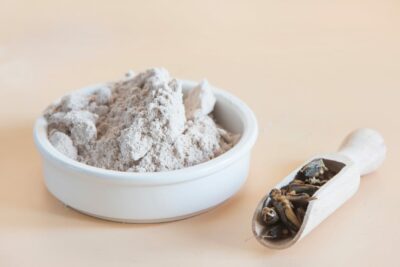The European Commission has recently approved cricket flour to be used in selected foods under the “novel foods” regulation. The Commission had already approved three other insects for human consumption in the European Union (EU): dried Tenebrio molitor larva; frozen, dried and powdered form of Tenebrio molitor larva; and frozen, dried and powdered forms of Locusta migratoria.
Apart from crickets, there are eight more pending files that are being assessed by the European Food Safety Authority (EFSA). Where are they approved for use? What does “novel food” mean? And what are the reasons behind the adoption of proteins from insects? But most of all, is it ethical? Can insects suffer?
Is Eating Insects Really a New Thing?
While for Europeans “bugs” are not what consumers would expect to find on the menu, in Africa, Asia, and Latin America, eating insects is part of many traditional cultures and meals. Worldwide, people use about 2,100 species of insects for food, with crickets and grasshoppers among the favorite street food snacks in the world. They are consumed in almost 50 countries, including the United States and Australia. They are also mentioned as “approved foods” in the Bible, in Leviticus 11:22, where God says: “you may eat any kind of locust, katydid, cricket or grasshopper”. And there is another surprising fact: cockroaches, who are commonly eaten in countries like Thailand and Madagascar, belong to the same family as shrimps and prawns. In particular, shrimps are often called “the cockroaches of the sea” as they have the exact same eating habits as the land cockroaches, i.e. they are scavengers. Moreover, they belong to the same phylum, Arthropoda, and they have the same ancestors. So why do we eat shrimps and consider cockroaches as pests in western countries? Could it just be a cultural thing? Of course it is, but that is not the point. Let’s go on.
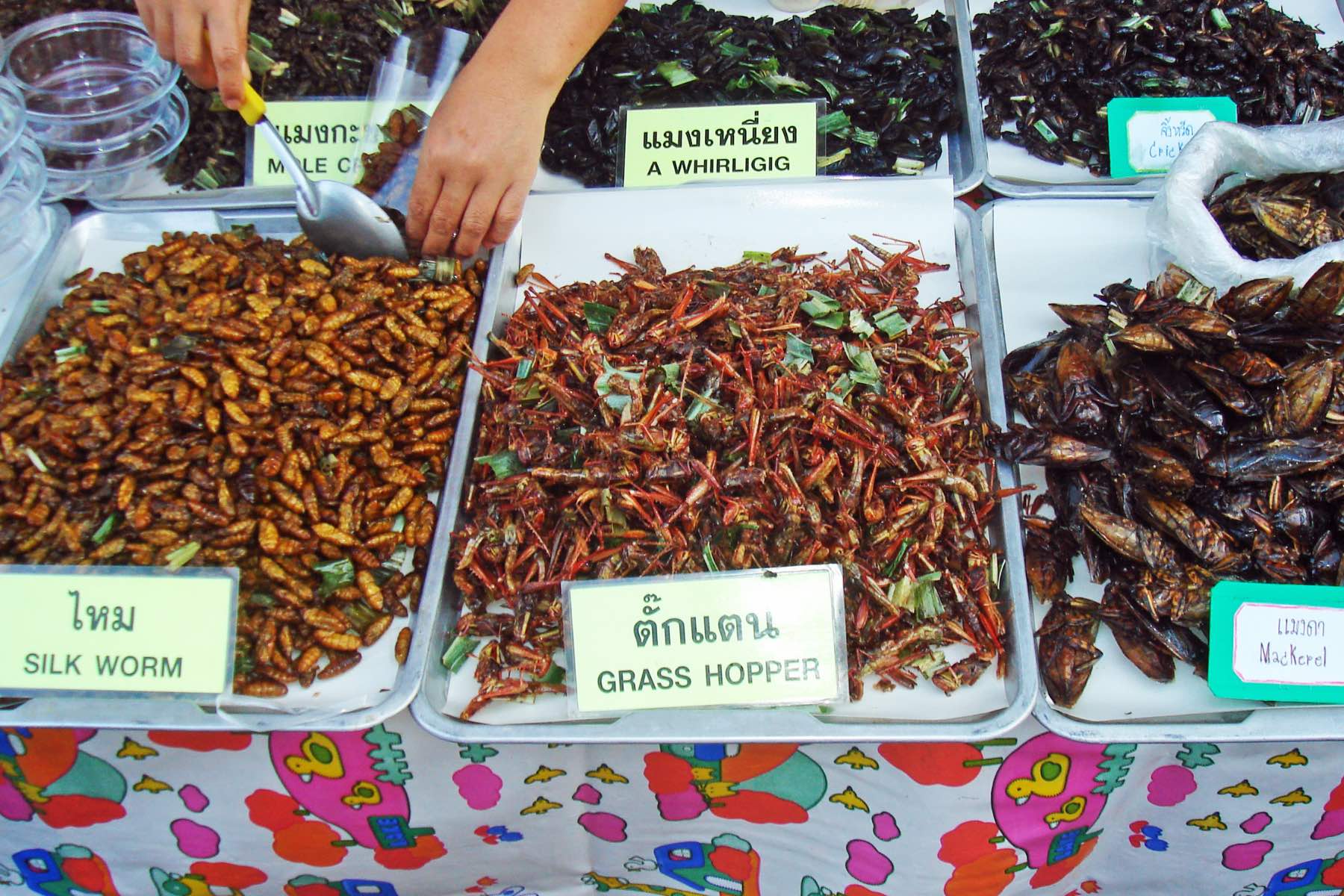
Where Can We Find Insects in EU Foods?
The use of cricket flour in the EU is authorized under the 2023/5 regulation of 3 January 2023 as “novel food” for a “trial period” of five years, based on an application by just one producer. The request made and accepted by the Commission authorizes “partially defatted powder obtained from whole Acheta domesticus (house cricket) to be used in multigrain bread and rolls, crackers and breadsticks, cereal bars, dry pre-mixes for baked products, biscuits, dry stuffed and non-stuffed pasta-based products, sauces, processed potato products, legume- and vegetable- based dishes, pizza, pasta-based products, whey powder, meat analogues, soups and soup concentrates or powders, maize flour-based snacks, beer-like beverages, chocolate confectionary, nuts and oilseeds, snacks other than chips, and meat preparations”, which is like saying almost everywhere.
What has triggered a lot of confusion among consumers is the “meat analogue” application, as many have read this as “cricket flour will be used in vegan products”. Do not worry, this will not happen for a number of reasons, and we will explain them below.

Why Are Crickets Considered as Novel Food in the EU and What Does It Mean?
Cricket flour, like lesser mealworms, are allowed for food applications in the EU under the “novel food” regulation. This means that they are “food that had not been consumed to a significant degree by humans in the EU before 15 May 1997”. A similar process exists in the US, where they are referred to as “new dietary ingredients”. Before any new food – food from new sources, new substances used in food as well as new ways and technologies for producing food – is approved under the “novel food regulation” in the EU, the EFSA must conduct a scientific risk assessment to make sure it is safe for human consumption. EFSA would normally use traditional foods and ingredients as a benchmark and assess the safety based on the similarities between the existing reference and the new proposal.
The notion of novel food is not new at all, if you think about it. Throughout human history and with the increasing globalization, cross-cultural influences and interactions and experimentation, we have seen new foods and ingredients come to our tables. Speaking from a western perspective, foods that are now staple in our kitchen were brought from far-off countries, such as bananas, tomatoes, potatoes, maize, pineapple, spices, mango. Dairy products and the consumption of milk itself is relatively new in our evolution and it did not spread all over the earth at once. Historically, it was mainly used in West Asia and spread to Europe in the West and up to North West India in the East. Large parts of the world like the American Continent, the African Continent, Australia and East Asia, until recently did not use milk, and we know that lactose-intolerance rates are still high in those regions.
Let’s get back to our bugs, though. We will not find cricket skewers in the streets of London or chew on locust chips on the Rambla in Barcelona, as whole insects do not fall within the scope of the EU regulation and cannot be placed on the market without a pre-market authorisation. What we will find, though, are processed parts of the approved insects, and because of the novel food status, they must be clearly labeled, to avoid misunderstandings and to allow consumers “to make informed choices and to make safe use of food”. A clear labeling and ingredients list is even more important when the food may cause primary sensitization or allergic reactions.
Considering the existing regulations, the novel food status and the allergenic power of cricket powder, there is no risk of it being a “hidden ingredient” in any marketed foods. The designation of this novel food on the labeling will be ‘Acheta domesticus (house cricket) partially defatted powder’. [source: Official Journal of the European Union]
In close proximity to the ingredients list, the manufacturers will have to add a warning statement, as the “partially defatted cricket powder” may cause allergic reactions to consumers with known allergies to “crustaceans, molluscs, and products thereof, and to dust mites”.
Will Cricket Powder Be Used in Vegan Food?
Of course not. “Meat analogue” does not necessarily mean “suitable for vegans (or vegetarians)”, and there are already various meat analogues on the market that are not suitable for vegans as they contain egg albumen, dairy proteins, or animal-derived food colourings (such as EU additive E120 or carmine, derived from the cochineal insect).
Considering that insect powders or pastes fall under the novel food legislation and may cause allergic reactions (in particular in persons who are allergic to crustaceans, molluscs and dust mites), there is no way they will be hidden in products formulated for the vegan or vegetarian market. By definition, a food which is “suitable for vegans” implies that, as far as possible and practicable, animals have not been used at any stage of the preparation of that food, or of the ingredients used in that food. And there is no doubt that insects are animals.
Why Are Insects Marketed for Food?
As we have already mentioned, insects are regularly eaten in many parts of the world and they are now being approved as a novel source of protein in the EU. It is of course up to consumers to decide whether they want to eat insects or not.
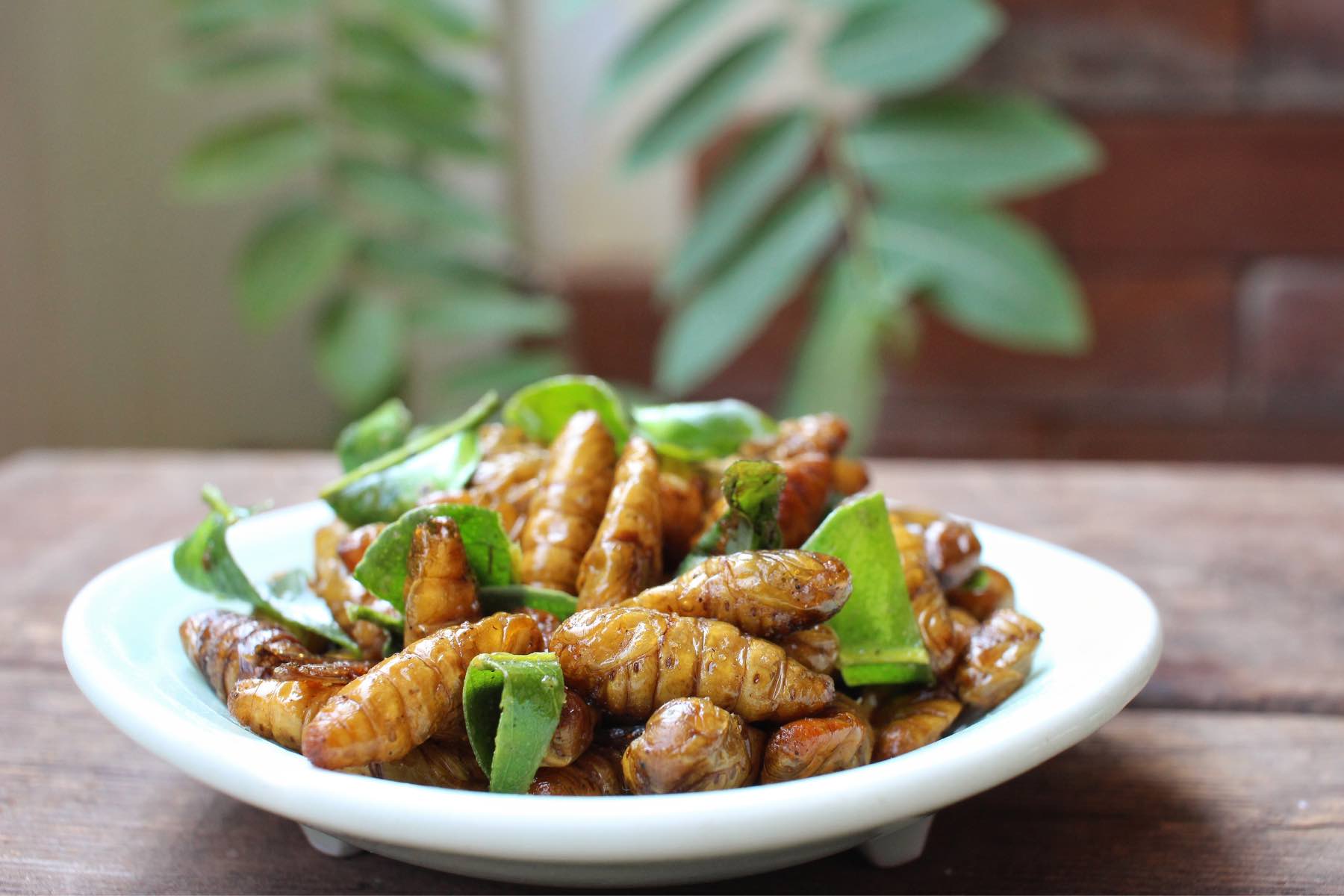
According to FAO, edible insects are a key issue in the twenty-first century and must be looked at as an alternative and sustainable protein source. They already form part of the traditional diets of at least two billion people on the planet, and offer a number of environmental benefits when compared to farmed animals because of their “high feed conversion efficiency”, since on average, they can convert 2 kg of feed into 1 kg of insect mass, whereas cows require 8 kg of feed to produce 1 kg of body weight gain. Insects are also said to have a much lower carbon and water footprint than “normal” farmed animals, and would also offer health and social-livelihood benefits to underserved and undernourished communities.
But wouldn’t a balanced plant-based diet offer the same benefits?
Do Insects Feel Pain?
Insects are animals. And even though humans tend to look at them negatively, and often treat them with violence, they are living beings with full right to live their life. But do they feel pain? Can we measure it?
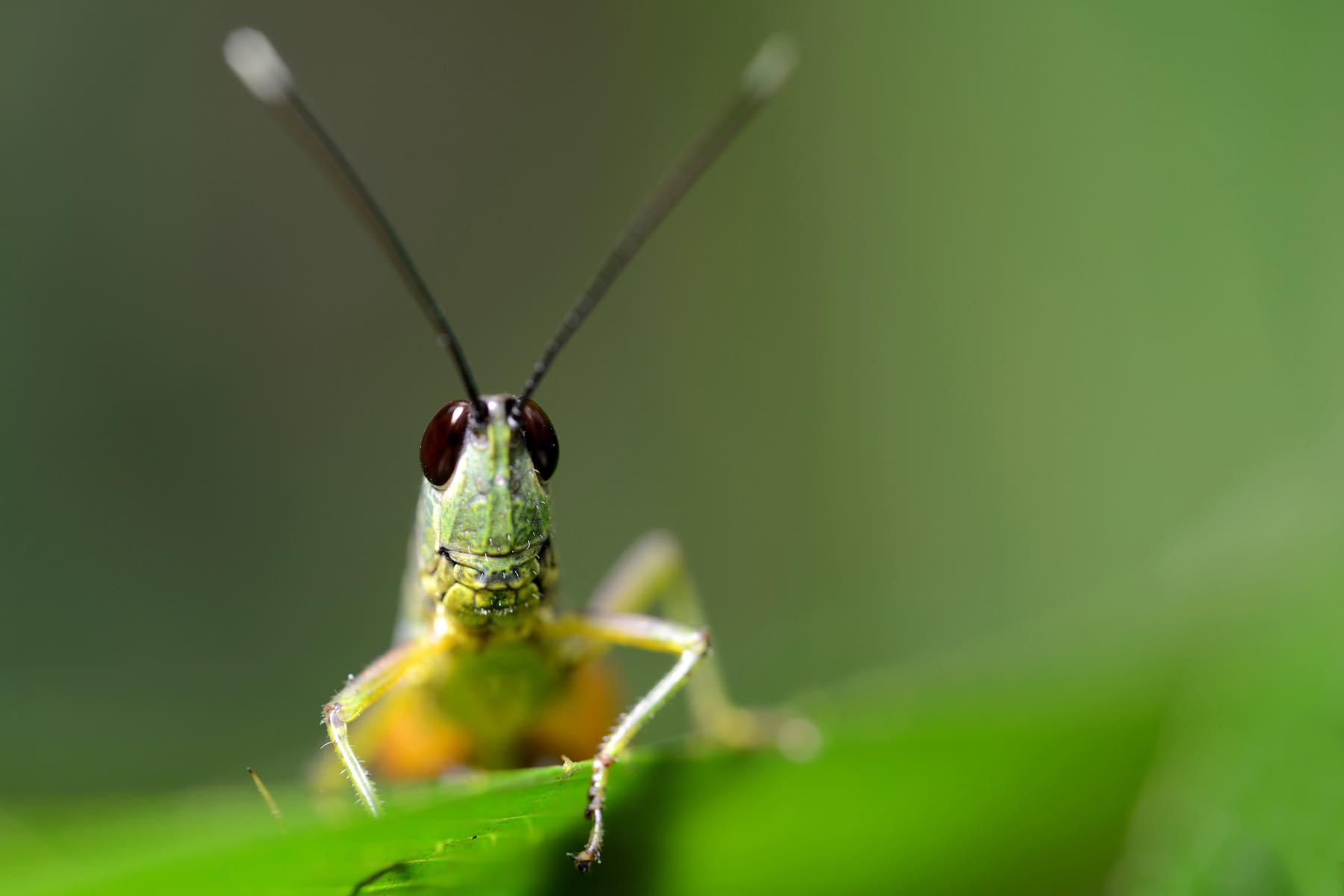
There is a reasonable likelihood that insects have a degree of consciousness and can experience suffering. They clearly show “nociception”, which is the mechanism that allows all organisms to respond to negative stimuli, but behavior is not a reliable guide when it comes to the perception of pain at the cerebral level. Insects have numerous sensory systems, including for vision, smell, taste, touch, temperature, and humidity, but do they have pain receptors?
Insects may have fewer neurons, limited interconnections between brain areas, and fairly small nervous systems – but does it really matter? Pain is not an all-or-nothing phenomenon. Even humans feel pain in different ways and there is no direct way of measuring the subjective experience of pain in any being, including humans. One recent study published in the Science Advances magazine has found that insects such as fruit flies can experience chronic pain. Scientists proved that flies receive pain messages via “sensory neurons in their ventral nerve cord, the insect equivalent of a spinal cord”, and even after an injury has healed, they become hypersensitive and try to protect themselves from negative stimuli throughout their lives.
There are currently at least one trillion insects raised and killed annually for food and animal feed, and the industry is rapidly growing. Common slaughter methods include extreme heat and cold, often preceded by starvation: in the case of crickets, they are normally “slaughtered in the US and Europe by freezing, though shredding and heating are also common. They are often freeze-dried to remove water, and sometimes freeze-dried live”. Pretty horrible, isn’t it?
Insects have been shown to react to excess heat, electric shock, poking and pinching, and some species have also shown the ability to learn and associate certain odors to negative or positive experiences, even though they might not show the same reactions to pain as humans. But does this really matter? Do we really need to compare every living being’s suffering to ours, and assess their ability to experience pain to how we react to it? Or make a distinction between those beings who are conscious of their pain, and those whose consciousness we simply cannot measure, or understand?
“Probably what consciousness requires is a sufficiently complicated system with massive feedback. Insects have that.”
Christof Koch, Chief Scientific Officer at the Allen Institute for Brain Science
Conclusions
Insects have been used for human consumption for thousands of years and are an important protein source in many countries worldwide. Applications to push for insect protein use in Europe are driven mainly by sustainability reasons, and according to FAO there are strong environmental, health, social, and livelihood drivers to make insect farming even more widespread than it is today.
However, we know that the same sustainability, environmental, health, social and livelihood drivers can be put forward to support a plant-based food system: vegan diets can support more people with a lot less land than meat-centric diets and would free up areas for rewilding and nature restoration; they offer all the necessary nutrients for optimal health and minimize the risk of type 2 diabetes, cardiovascular disease, and certain type of cancers; they reduce the pandemic potential linked to animal farming and consumption; and could help us meet the farm-to-fork objectives in less time, build “a fair, healthy, and environmentally-friendly food system”, and halt biodiversity loss.
Beyond that, insects are animals, and the likelihood that they can experience pain as a cat, or a calf, or a lobster can, is high.
If the environment, the future of the planet, our health or the health of our children, or animal welfare are important to us, it would make much more sense to swiftly transition to a plant-based diet – and we can help! Check out our free challenges designed around what inspires you most – we offer daily assistance, simple and tasty recipes, resources to explore different aspects and free support throughout your vegan journey.
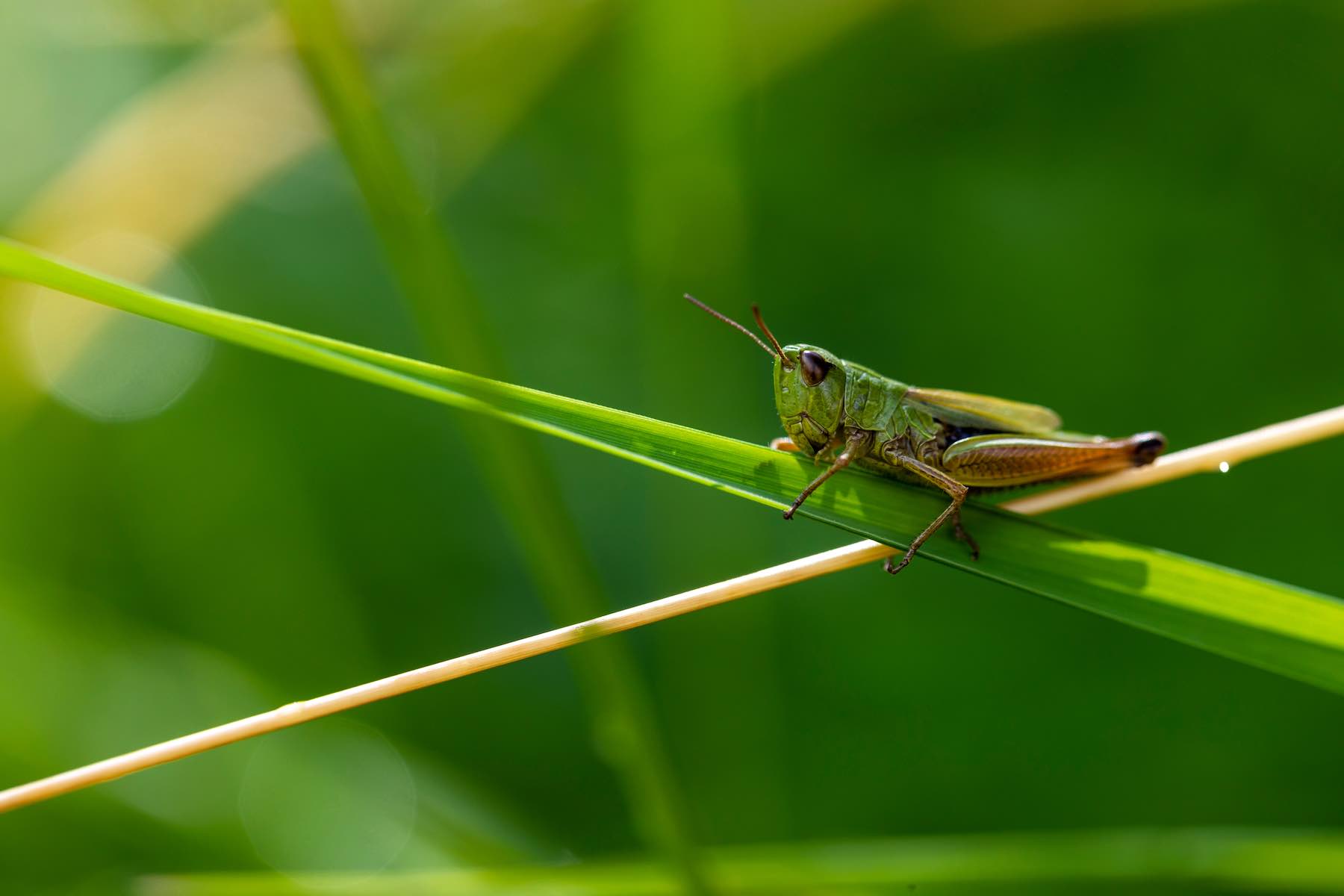
How To Help Insects Around You
- If you have a garden plant indigenous wildflowers to keep pollinators happy
- Buy or make your own bug hotel and put it up in a sheltered spot
- Show your kids this cute video from actress Elsa Pataki saving a giant spider, and encourage them to rescue insects, not to harm them
- Get educated on your local bugs and how to live with them in a peaceful way
